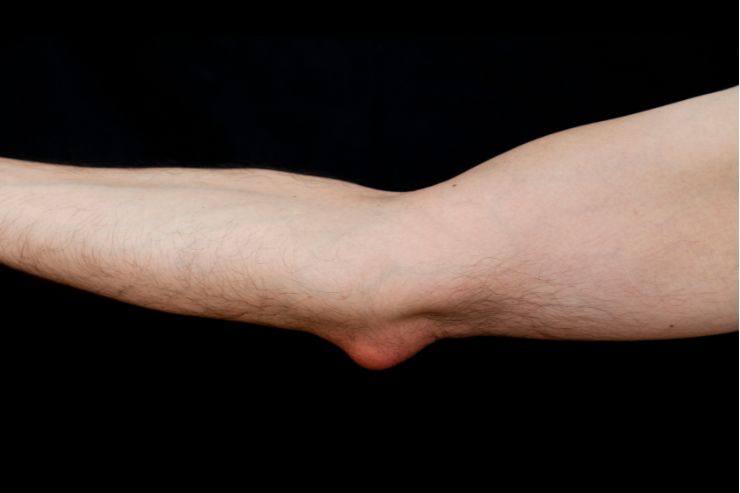Bursitis
- Home
- Treatments
- Bursitis

Bursitis is a common condition that involves inflammation of the bursae—small, fluid-filled sacs located near joints. These sacs act as cushions, reducing friction between bones, tendons, and muscles during movement. Bursitis often occurs in areas such as the shoulders, elbows, hips, and knees, leading to pain, swelling, and restricted motion.
What Causes Bursitis?
Bursitis can develop for several reasons, including:
- Repetitive Motion: Frequent use of a joint, such as repetitive overhead movements in sports or work, can irritate the bursae.
- Prolonged Pressure: Staying in one position for extended periods, like sitting on a hard surface, can cause bursitis.
- Injury: Direct trauma to a joint, such as a fall, can lead to inflammation of the bursa.
- Infections: In some cases, bursitis can result from an infection, especially if the bursa is punctured or injured.
- Underlying Conditions: Conditions such as arthritis or gout can increase the risk of developing bursitis.
Symptoms of Bursitis
Common symptoms of bursitis include:
- Localized Pain: Pain and tenderness around the affected joint, often worsening with movement.
- Swelling: The area may become swollen and warm to the touch.
- Reduced Range of Motion: Difficulty moving the joint due to pain and stiffness.
- Increased Pain with Pressure: Activities that put pressure on the joint, such as kneeling or resting on it, can intensify discomfort.
Treatment Options for Bursitis
Effective treatment for bursitis focuses on reducing inflammation and alleviating pain. Common approaches include:
- RICE Method (Rest, Ice, Compression, Elevation): This initial treatment helps manage symptoms.
- Medications: Over-the-counter nonsteroidal anti-inflammatory drugs (NSAIDs) can relieve pain and swelling.
- Physical Therapy: Exercises to strengthen surrounding muscles and improve flexibility can aid recovery.
- Corticosteroid Injections: For persistent pain, injections can reduce inflammation and provide relief.
- Surgery: Rarely needed, surgical intervention may be considered if conservative treatments fail.
Preventing Bursitis
Taking proactive steps can help minimize the risk of developing bursitis:
- Warm Up and Stretch: Always warm up before physical activity and incorporate stretching to improve flexibility.
- Use Proper Techniques: Whether in sports or work, using correct techniques can prevent undue stress on joints.
- Take Breaks: If your activities involve repetitive motions or prolonged pressure, take regular breaks to reduce strain on the joints.
- Maintain a Healthy Weight: Excess weight can put additional pressure on joints, increasing the risk of bursitis.

